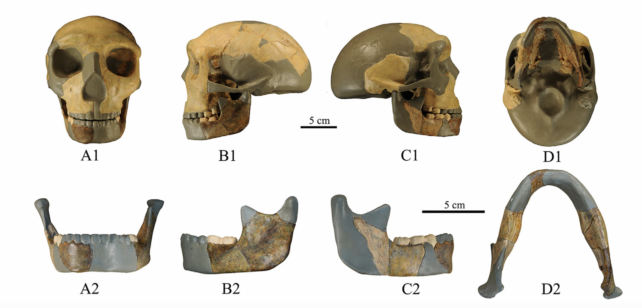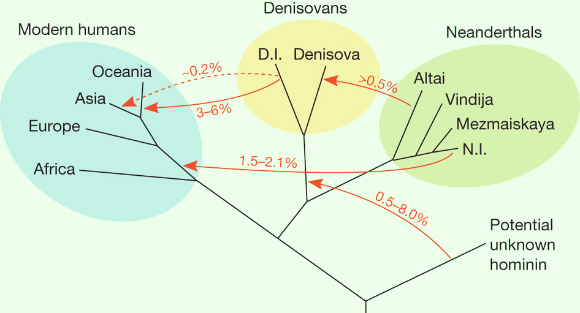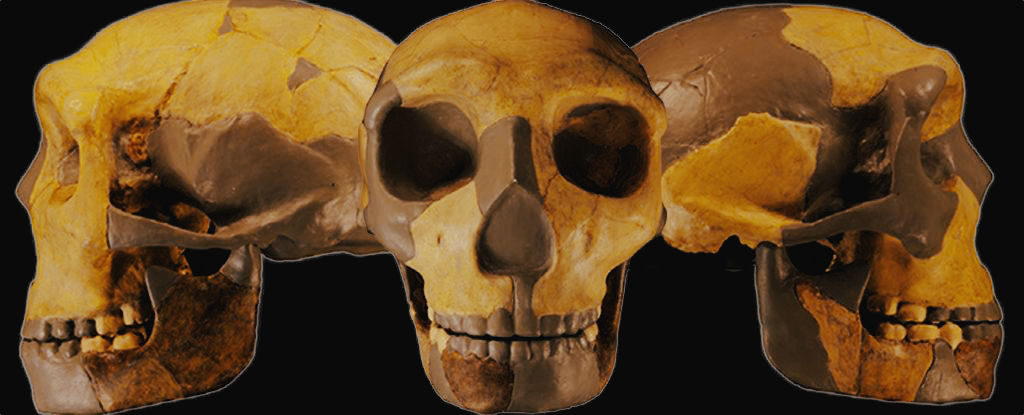Products You May Like
An international team of scientists has described an ancient human fossil in China unlike any other hominin found before.
It resembles neither the lineage that split to form Neanderthals, nor Denisovans, nor us, suggesting our current version of the human family tree needs another branch.
The jaw, skull, and leg bones belonging to this yet-to-be classified human, labeled HLD 6, were discovered in Hualongdong, in East Asia, in 2019. In the years since, experts at the Chinese Academy of Sciences (CAS) have struggled to match the remains to a known lineage.
The hominin’s face is similarly structured to that of the modern human lineage, which split from Homo erectus as far back as 750,000 years ago. But the individual’s lack of chin appears more like that of a Denisovan – an extinct species of ancient human in Asia that split from Neanderthals more than 400,000 years ago.
Working alongside researchers from China’s Xi’an Jiaotong University, the UK’s University of York, and Spain’s National Research Center on Human Evolution, researchers at CAS think they have uncovered an entirely new lineage – a hybrid between the branch that gave us modern humans and the branch that gave us other ancient hominins in the region, like Denisovans.

Historically, many hominin fossils from the Pleistocene that have been found in China haven’t fitted easily into any one lineage. As a result, such remains are often explained away as intermediate variations on a straight path to modern humanity; as an archaic example of a Homo sapien, for example, or an advanced form of Homo erectus.
But this rather linear, simplistic interpretation is controversial and not widely accepted. While Homo erectus did persist in Indonesia until roughly 100,000 years ago, the remains that were recently found in East China hold a greater resemblance to other, more modern lineages of hominin.
Previously, genome studies on Neanderthal remains in Europe and western Asia have found evidence of a fourth lineage of hominin living in the Middle to Late Pleistocene.
But this missing group has never been officially identified in the fossil record.

Perhaps the recent human remains found in China are a missing piece of the puzzle.
The fossilized jaw and skull belong to a 12- or 13-year-old, and while its face has modern-human like features, the limbs, skull cap, and jaw “seem to reflect more primitive traits,” the authors of the analysis write.
Their results complicate the path to modern humans. The mosaic of physical features found in this ancient hominin instead supports the coexistence of three lineages in Asia – the lineage of H. erectus, the lineage of Denisovan, and this other lineage that is “phylogenetically close” to us.
Homo sapiens only appeared in China around 120,000 years ago, but it seems as though some of our ‘modern’ features existed here long before that. It may be that the last common ancestor of H. sapiens and Neanderthals arose in southwest Asia and later spread to all continents.
That theory will now need to be confirmed with more archaeological research.
The study was published in the Journal of Human Evolution.
